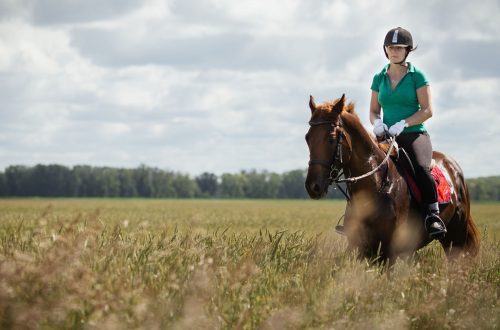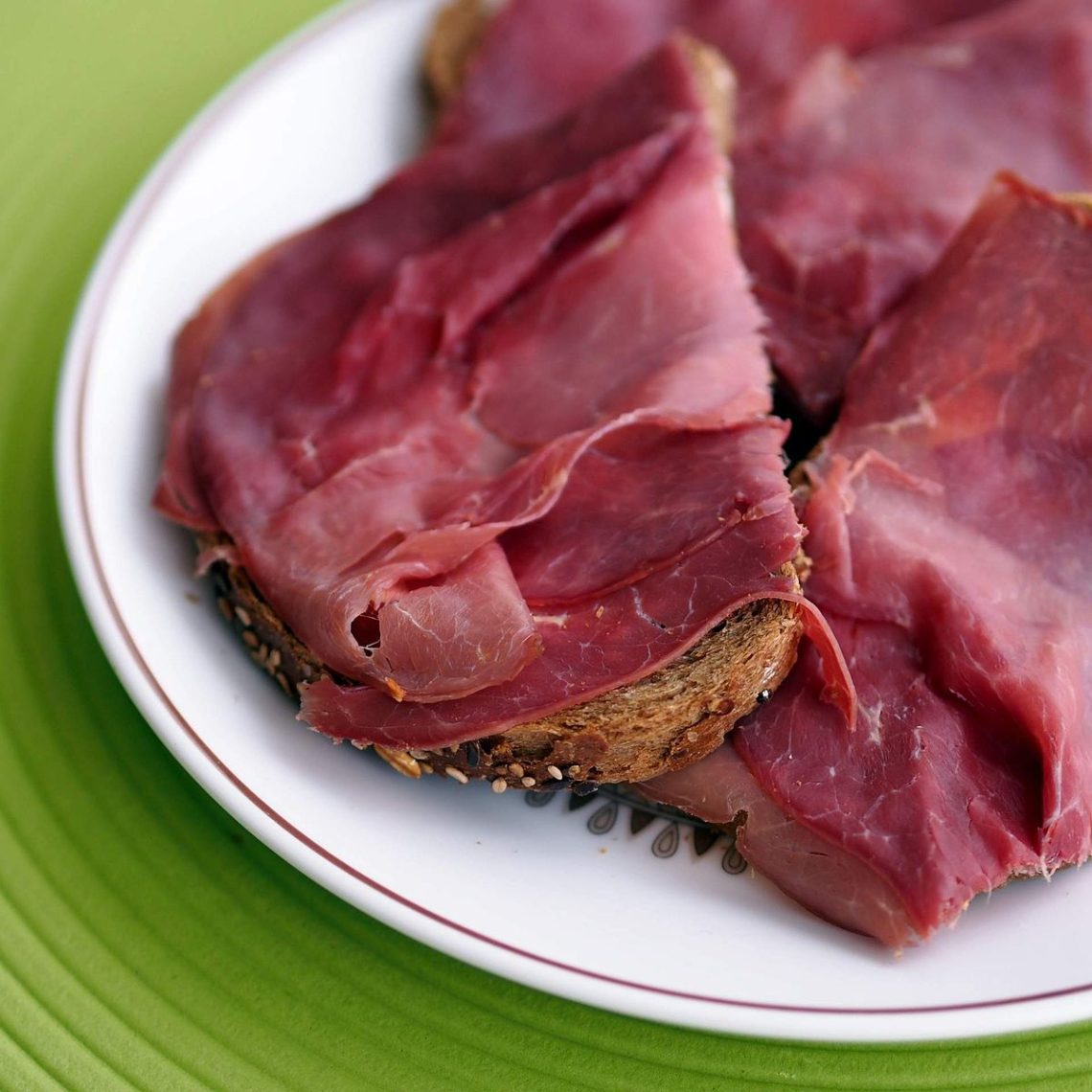
Horse wild meat
My horse Gong was unlucky this winter: he was put out of action for six months. And it all started because of a small wound, which, in fact, did not even cause discomfort to the horse. But, alas, the wound degenerated into wild meat, and you can’t call it harmless. What is wild meat in a horse, why does it appear and how to treat wild meat in horses?
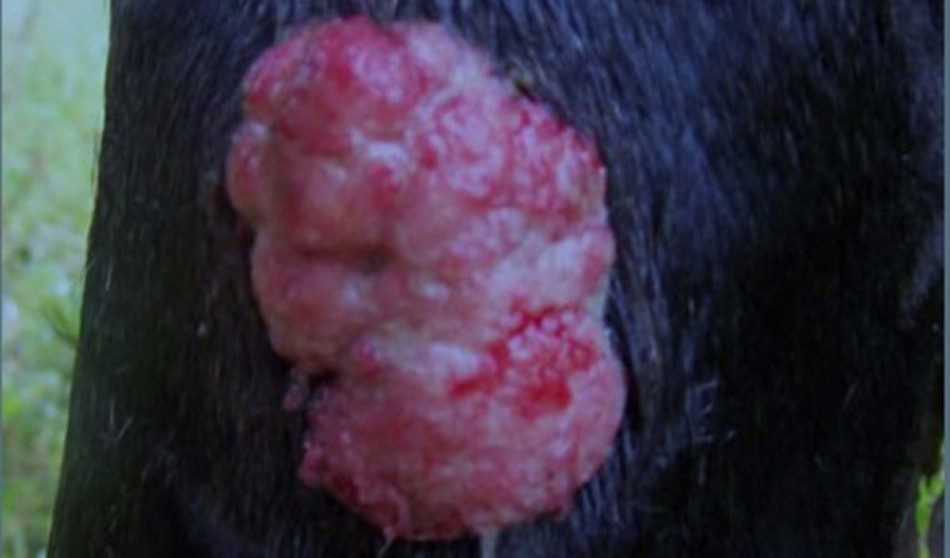

In the photo: wild meat from a horse
Contents
Wild horse meat: what is it?
Wild meat in a horse is an abnormal growth of granulation tissue at the site of a wound. Typically, granulation tissue is shaped like a cauliflower or mushroom.
Most often, wild meat in a horse occurs on the legs.
This is a nasty thing that can grow to huge sizes – including the size of a human head.
Horse wild meat: causes
The main reason for the appearance of wild meat in a horse is a violation of the wound healing process, as a rule, an open one.
If healing proceeds normally, connective tissue cells form in the wound, which encloses the wound. Granulation tissue is a kind of external barrier, a replacement for damaged skin. Granulation tissue prevents pathogens and foreign bodies from entering the wound, gradually filling the depression. And when it is full, the granulation tissue dries out. As a result, the edges of the wound close and grow together.
If the body overdid it with protection, there is too much granulation tissue, it protrudes beyond the boundaries of the wound and forms wild meat. And speaking above the surface of the skin, wild meat does not allow the wound to grow together.
The most dangerous wounds in terms of the formation of wild meat in a horse are in the area of uXNUMXbuXNUMXbthe joints of the limbs, since the horse constantly bends and unbends the leg, which constantly disturbs the wound. Actually, my horse had a wound on the fetlock.
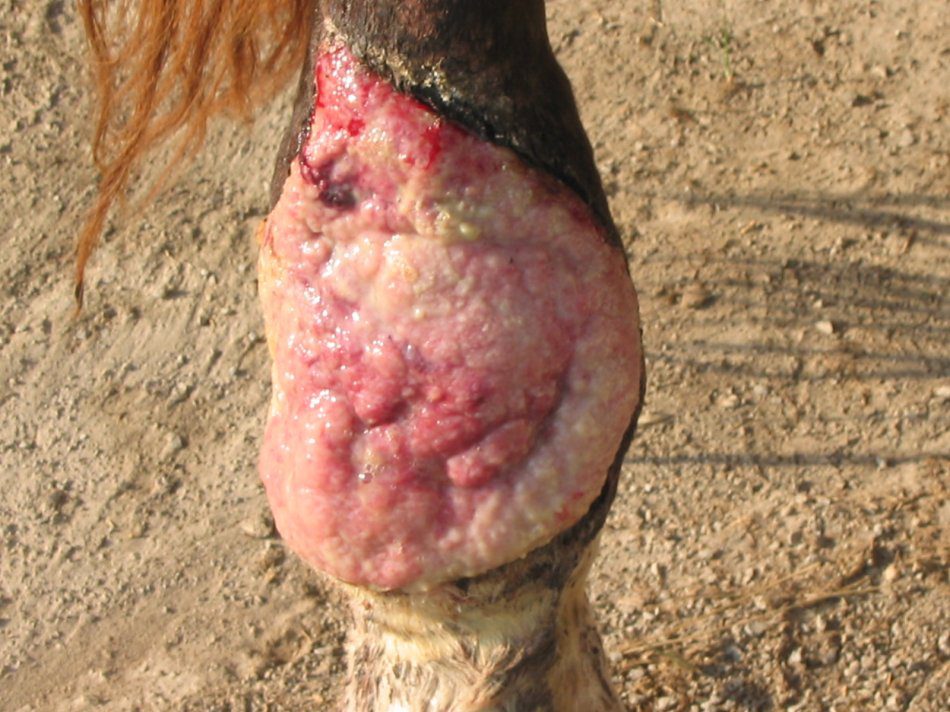



In the photo: wild meat from a horse
The formation of wild meat in a horse is also facilitated by the fact that granulation is much more active than healing, so that the slightest failure in wound healing is fraught with the appearance of wild meat. Therefore, deep wounds are more dangerous than superficial ones.
Professor Chris J. Mortensen of the University of Florida, in addition, is convinced that the cause of the appearance of wild meat may be excessive washing of the horse’s wound with a jet of water.
Horses are more prone to growing wild meat than other animals. Cats and dogs interfere with granulation by licking the wound, but in the horse this is extremely limited.
Wild meat in a horse: symptoms
Wild meat in a horse is dark red or brown granulation tissue.
Wild meat does not cause pain to the horse, but it can cause itching.
Since wild meat is riddled with blood vessels, it can bleed profusely if a horse scratches or damages it slightly.
Sometimes the horse’s body temperature rises or the leg that grows wild meat swells.
If wild meat in a horse is left untreated, it can turn into a keloid (scarring tumor). Scar tissue, unlike granulation tissue, is fibrous, whitish and dense. The cicatricial outgrowth can become keratinized.
Rarely, but it happens that wild meat turns into a malignant tumor (sarcoma).
Horse wild meat: treatment
Treatment of wild meat in horses is very problematic.
Firstly, this process is very long – at least 3 – 4 weeks, if you’re lucky. Sometimes, as in our case, everything drags on for several months, or even years. But by itself, wild meat will not work in a horse.
Secondly, unfortunately, there is no universal treatment for wild meat in horses. One thing helps someone, another thing helps someone, and sometimes it takes a lot of time to find a remedy that will cure wild meat in your horse.
Therefore, prevention in this case is very important. If a horse develops a bleeding wound, call the veterinarian as soon as possible. Sewing up a wound that needs it within 12 hours will reduce the risk of complications. It is better to shave off the hairs that get into the wound.
If prevention fails and the horse’s wild meat begins to grow, there are several ways that can help. However, I repeat, there is no universal way to treat wild meat in a horse, and if such a need arises, you will have to find something that will help your maned friend.
Methods for treating wild meat in a horse
- The use of potassium permanganate – potassium permanganate (powder or dark purple solution). Potassium permanganate dries the wound, cauterizes blood vessels and can stop the growth of granulation.
- Using a mixture of potassium permanganate (potassium permanganate) with tricilin or other antiseptic.
- Vagotil is a human drug for the treatment of cervical erosion. “Vagotil” can form a crust, which promotes active wound healing. “Vagotil” can be diluted with saline, or you can cauterize clean – you should consult a veterinarian.
- Powders with iodoform, which are sold in veterinary pharmacies – they not only disinfect, but can also burn granulations. They need to be treated 2 times a day. Before treating the wound, it is better to wash it with an antiseptic.
- Moisten the wound with chlorhexidine, monoclovit, or alcohol-free iodine to soak or just soak. Then mix potassium alum with baby powder (proportion 1:1) and apply to the wound, hold for a while or apply a bandage so that the powder remains on the surface of wild meat for a while.
- Put a tight elastic band over wild meat on a horse. You can use a rubber band or cut off part of a rubber glove. The rubber band pinches the vessels that feed the wild meat, and after a while it will fall off.
I must say, it was the last option that helped my horse get rid of wild meat, and in less than 2 weeks, although several months of efforts had not led to anything before.
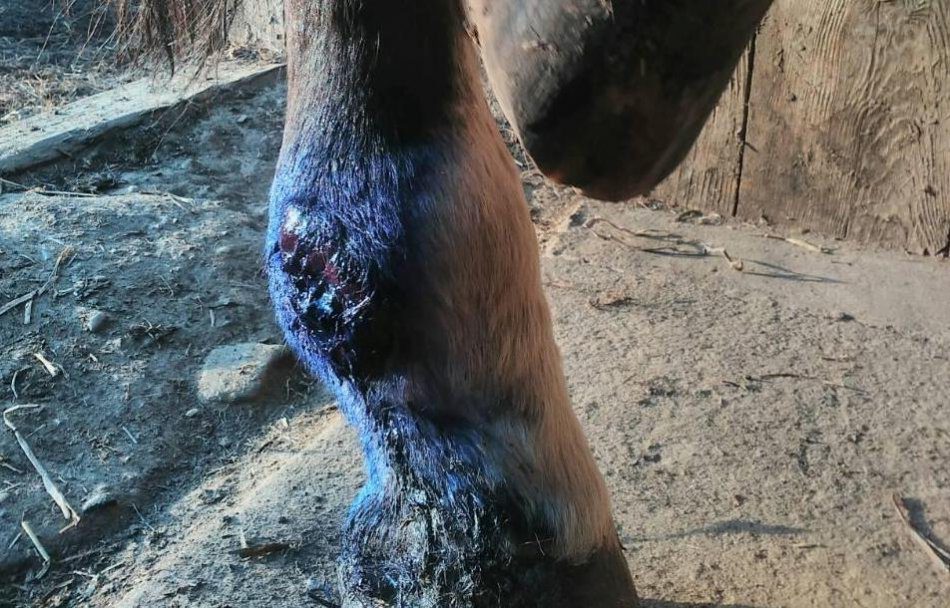



In the photo: a horse’s leg after the wild meat fell off
But, again, different horses can recover from wild meat in different ways. The main thing is not to despair and not give up.





